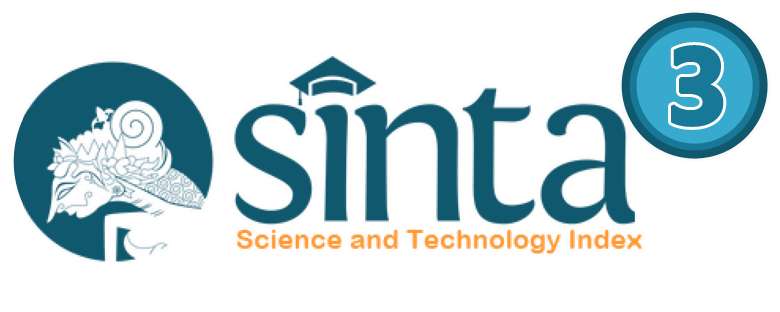The Effectiveness of Shadow Puppet Media
an Experimental Study at MAK Zidny Ilma Warzuqny Fahma
Abstract
This research aims to use shadow puppet media, which will be used to improve speaking skills in narrative text learning material. The subjects of this study were at MAK Zidny Ilma Warzuqny Fahma students. The sample in this study were students of tenth grade at MAK Ziwfa. This quantitative study focused on student's achievement in the use of shadow puppet media to increase the student's speaking skills in narrative text. The finding of this study shows that shadow puppet media significantly gives effects on student's learning. The conclusion is based on the significance value calculation of the T count > T table, so H0 is rejected; therefore, Ha is accepted. It means that there was a significant difference between student learning outcomes taught by using a shadow puppet media through English speaking skill.
Downloads
References
Amaral, G., J. Bushee, U. G. Cordani, KOJI KAWASHITA, J. H. Reynolds, Fernando FLÁVIO MARQUES De E ALMEIDA, F. F.M. de Almeida, et al. No 主観的健康感を中心とした在宅高齢者における 健康関連指標に関する共分散構造分析Title. Journal of Petrology. Vol. 369, 2013.
Baidawi, Achmad. “OKARA Journal of Languages and Literature , Vol . 1 , Tahun 1 , Mei 2016 OKARA Journal of Languages and Literature , Vol . 1 , Tahun 1 , Mei 2016.” OKARA Journal of Languages and Literature 1, no. 1 (2016): 54–65.
Churchill, Rick, P. Ferguson, S. Godinho, Giovanni Andrea Cornia, Renato Paniccià, and Massimo Livi Bacci. “Con t En t S.” Teaching: Making a Difference LVII, no. 2015 (2015): 212–253.
Dunlosky, John, Katherine A. Rawson, Elizabeth J. Marsh, Mitchell J. Nathan, and Daniel T. Willingham. “Improving Students’ Learning with Effective Learning Techniques: Promising Directions from Cognitive and Educational Psychology.” Psychological Science in the Public Interest, Supplement, 2013.
Fauzi, Syahrizal. “Sosiologi Ekonomi Islam.” Islamic Review: Jurnal Riset dan Kajian Keislaman VI, no. 1 (2017): 136–138.
Hamre, I. Affective Education through the Art of Animation Theatre. The Power of the Puppet, 2012.
Hayati, Nur Rohmah. “PERAN PESANTREN MENGHADAPI KONSTELASI ERA 4.0.” Islamic Review : Jurnal Riset dan Kajian Keislaman (2019).
K, Yulia Shinta, Dwi Rukmini, and Sri Wuli Fitriati. “Children ’ s Production of Interlanguage in Speaking English As The Foreign Language” 8, no. 4 (2018): 452–460.
Leong, LM, SM Ahmadi - Diario de investigación en educación en inglés, and undefined 2017. “Un Análisis de Los Factores Que Influyen En La Capacidad de Hablar Inglés de Los Estudiantes.” Ijreeonline.Com (2017): 34–41.
Mundir. Statistik Pendidikan(Pengantar Analisis Data Untuk Penulisan). Yogyakarta: Pustaka Pelajar, 2014.
Sautter, Michael. “High-Impact Approaches to Teaching and Learning” (2019): 39–46.
Sekhar, G. Raja, and Sujata Chakravorty. TESL/TEFL: Teaching English as a Second or Foreign Language. ACADEMICIA: An International Multidisciplinary Research Journal. Vol. 7, 2017.
Setiawati. “Using Puppet As Media To Increase the Children Vocabulary.” Jurnal Pendidikan 8.2 (2016): 257–269.
Stockemer, Daniel. Quantitative Methods for the Social Sciences. Quantitative Methods for the Social Sciences, 2019.
The British Council. “The Use of the Media in English Language Teaching.” ELT Documents (1979): 117.
Thituyetanh, Nguyen. “The Key Principles for Development of Speaking.” International Journal on Studies in English Language and Literature (IJSELL) 3, no. 1 (2015): 49–53.
Toledo, Flor, and Steven Hoit. “Developing Speaking Skills in First Grade: The Impact of Puppets on Young Learners’ Spoken Interactions and Motivation.” Cambridge University Press. Teacher Research Program. Accessed fromhttp://puppetools. com/Reidmillerresearch. pdf on June 12 (2016): 2016.
Vilímec, Erik. “Developing Speaking Skills” (2006): 1–89.
Zhou, Molly, and David Brown. Educational Learning Theories: 2nd Edition. Education Open Textbooks, 2017.

This work is licensed under a Creative Commons Attribution-ShareAlike 4.0 International License.
Pemberitahuan Hak Cipta
Penulis yang menerbitkan bersama Islamic Review: Jurnal Riset dan Kajian Keislaman menyetujui ketentuan berikut:
- Penulis mempertahankan hak cipta dan memberikan jurnal hak publikasi pertama dengan karya yang dilisensikan secara bersamaan di bawah Lisensi Creative Commons Attribution-ShareAlike 4.0 International License (CC BY-SA 4.0) yang memungkinkan orang lain untuk berbagi karya dengan pengakuan kepenulisan karya dan publikasi awal dalam jurnal ini.
- Penulis dapat membuat pengaturan kontrak tambahan yang terpisah untuk distribusi non-eksklusif dari versi jurnal yang diterbitkan dari karya tersebut (misalnya, mempostingnya ke repositori institusi atau menerbitkannya dalam sebuah buku), dengan pengakuan awal publikasi di jurnal ini.
- Penulis diizinkan dan didorong untuk memposting karya mereka secara online (misalnya, di repositori institusional atau di situs web mereka) sebelum dan selama proses pengiriman, karena dapat menghasilkan pertukaran yang produktif, serta kutipan lebih awal dan lebih besar dari karya yang diterbitkan.

Karya ini dilisensikan di bawah Creative Commons Attribution-ShareAlike 4.0 International License.










